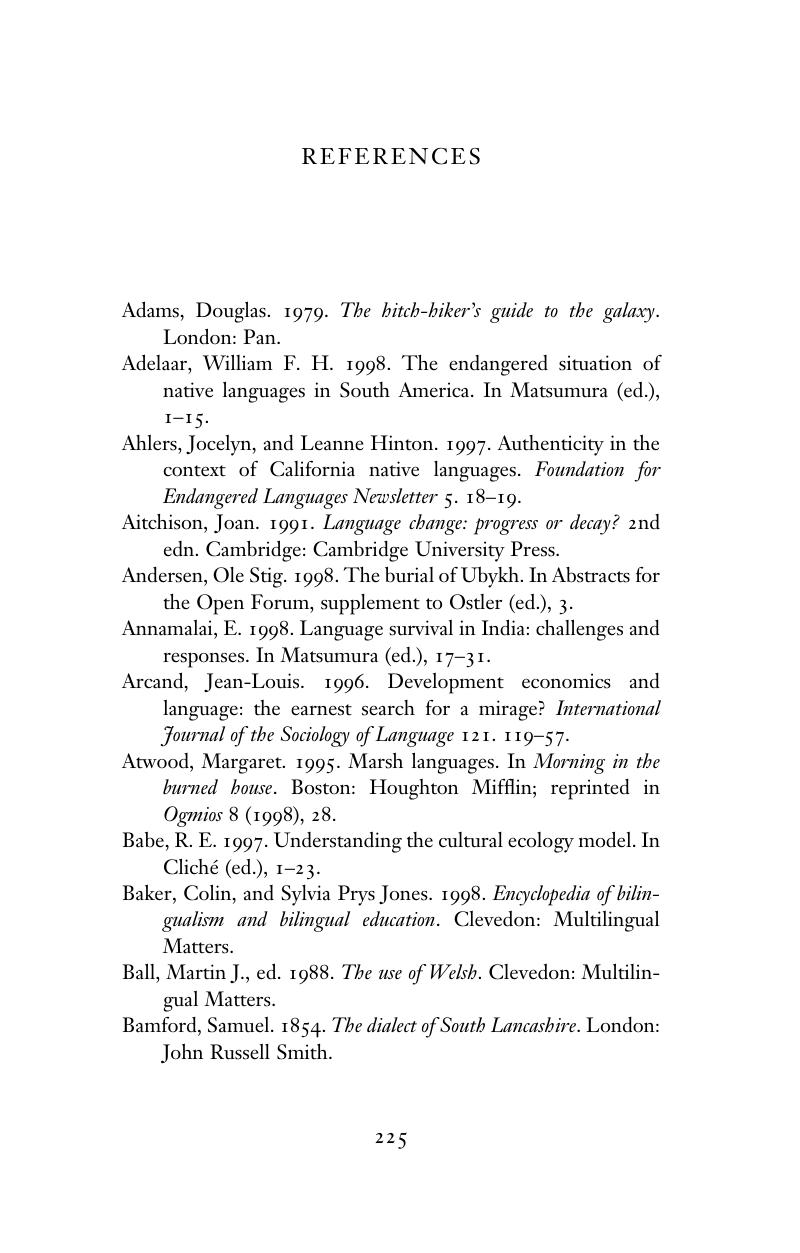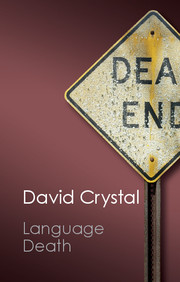Book contents
- Frontmatter
- Contents
- Preface
- 1 What is language death?
- 2 Why should we care?
- 3 Why do languages die?
- 4 Where do we begin?
- 5 What can be done?
- Appendix Some relevant organizations
- References
- Index of dialects, languages, language families, and ethnic groups
- Index of authors and speakers
- Subject index
- References
- Frontmatter
- Contents
- Preface
- 1 What is language death?
- 2 Why should we care?
- 3 Why do languages die?
- 4 Where do we begin?
- 5 What can be done?
- Appendix Some relevant organizations
- References
- Index of dialects, languages, language families, and ethnic groups
- Index of authors and speakers
- Subject index
- References
Summary

- Type
- Chapter
- Information
- Language Death , pp. 225 - 240Publisher: Cambridge University PressPrint publication year: 2014



